Artist Phillippa Lack uses Photoshop to transform her silk paintings into abstract designs printed on fabric. Visit her website to see more of her portfolio.
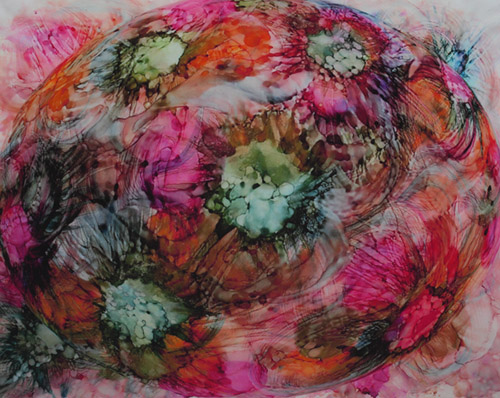
“Afternoon in the Garden” Digitally Printed Image on Organic Fiber, 36” x 26”
Usually, the first question people ask when meeting me for the first time is “What are you doing in Cheyenne, Wyoming?” since I’m originally from Jamaica. My heritage is reflected in my work. I don’t like somber hues! I like sun-splashed colors, and want viewers to be uplifted by my art.
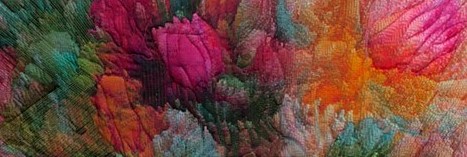
“Midnight Flowers” Digitally Printed Image on Organic Fiber, 27” x 5”
I’m an artist who chooses to work with textiles. My first adventure was with silk, and I’ve been exploring this medium for over thirty years. It’s been a fascinating time. I have expanded my basic techniques with a few small inventions of my own.
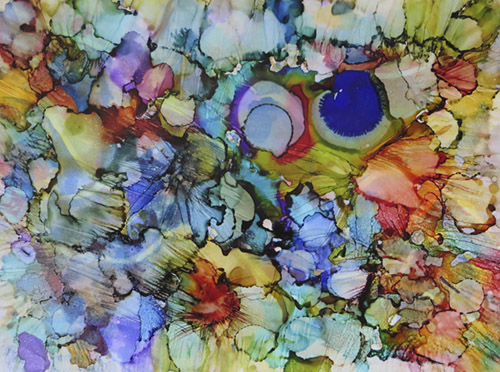
“Blue Dot” Digitally Printed Image on Organic Fiber, 33” x 25”
Painting on silk can be a daunting experience. There is really no room for mistakes, only design elements.

“Sunset Rays” Digitally Printed Image on Organic Fiber, 33” x 9”
Along the way, I have assisted in organizing conferences for Silk Painters International, and painted untold number of scarves, jackets and banners. One banner even won an award at the national orchid show in Washington, DC.
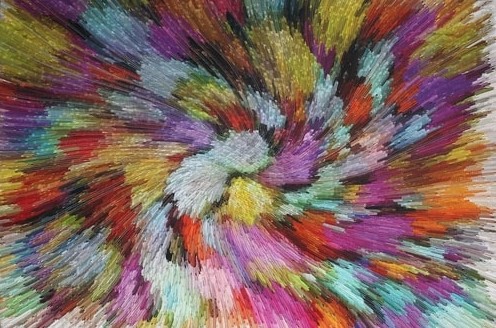
“Star Swirl” Digitally Printed Image on Organic Fiber, 33” x 23”
Over time, the industry has changed. New dyes and paints have been introduced, and digitally printed textiles came into their own.
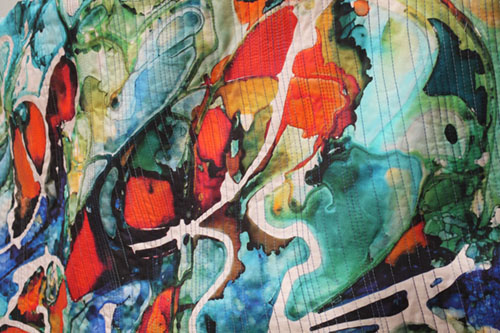
“Chaos” (Detail) Digitally Printed Image on Organic Fiber, 47” x 33”
After thirty years or so, I decided to branch out a bit and enter the digital arena. These are the pieces I’m presenting on Artsy Shark. I chose to use alcohol inks to create patterns to print for wall pieces and garments.
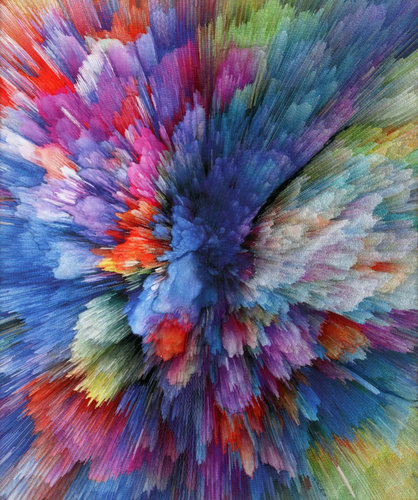
“Starburst 2” (Detail) Digitally Printed Image on Organic Fiber, 26” x 35”
Although it’s not as steep a learning curve as silk, it’s fascinating to watch the inks travel over the Yupo, a synthetic paper that does not allow for absorption. And, if you don’t like your first try, you can just wet a cotton ball with alcohol, wipe it all off, and begin a new masterpiece. All kinds of wonderful effects can be had. The tools needed are pretty elementary, such as the edge of a credit card, pieces of craft foam, cotton swabs, droppers and canned air.
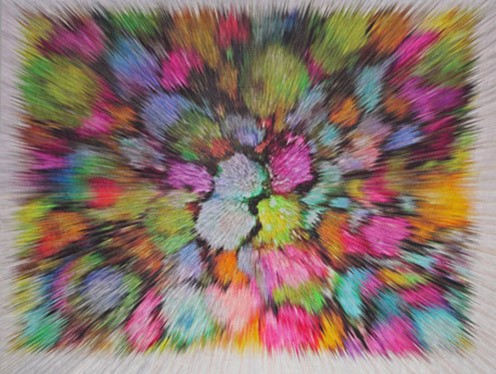
“Spindrift” Digitally Printed Image on Organic Fiber, 33” x 25”
Some of the works shown in this article began life as silk paintings. They have been transformed using the wonders of Photoshop to create abstract designs that lend themselves to color change, distortion and layered effects.
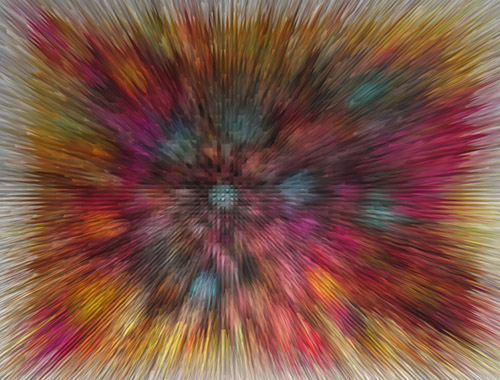
“Noon” (Work in Progress) Digitally Printed Image on Organic Fiber, 33” x 25”
After I get the fabrics back from my printer, they are washed and are then ready for stitching. I use several sizes of double or sometimes triple needles. The edge of the machine presser foot keeps my lines straight.
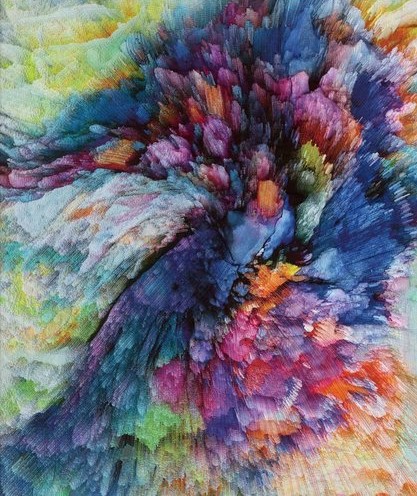
“Starburst 1 – Beginning” Digitally Printed Image on Organic Fiber, 26” x 35”
I hope I’ll have the honor of seeing my work decorate you or your living space.
Artist Phillippa Lack invites you to follow her on Instagram.


Speak Your Mind